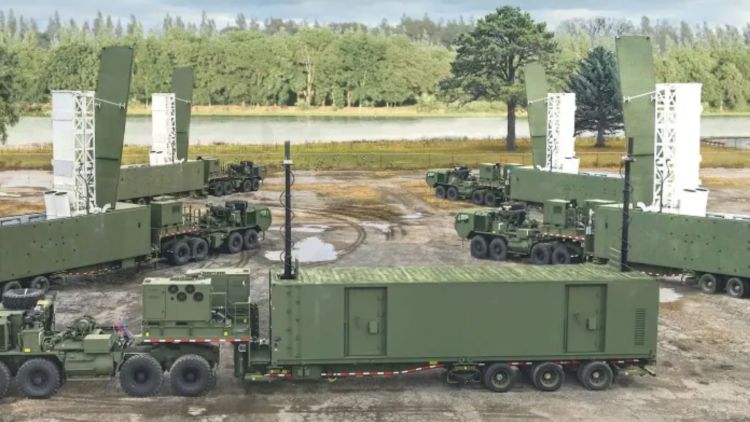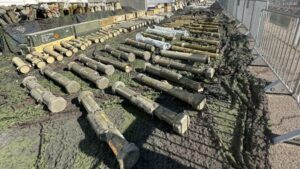The following piece, written by Jim Morris, first appeared on Warrior Maven, a Military Content Group member website.
China is making it clear it’s unhappy about as report that the Philippines intends to buy US-made intermediate-range ballistic missile launchers.
In a report in the Financial Times, Philippine defense secretary Gilberto Teodoro said that Manila plans to acquire the Typhon missile system that the US brought to the country last spring for military exercises. That move marked the first time the US had stationed intermediate-range missiles overseas since the breakdown of as treaty between Washington and Moscow aimed at preventing the development or deployment of missiles with a range between 500 to 5,500 kilometers.
The US had kept the Typhon systems in the Philippines since the end of the bilateral drills. Beijing had called that “provocative” and “destabilizing.”
“It gravely threatens regional countries’ security, incites geopolitical confrontation, and has aroused high vigilance and concerns of countries in the region,” Chinese Foreign Ministry spokesperson Lin Jian said in September.
On November 11, the Chinese Community Party’s English-language newspaper, the Global Times, published an article critical of the reported sale. It quoted the director of a Chinese think tank as saying the Philippines is on track to become a “real troublemaker” in the South China Sea.
The director of the Center for Southeast Asian Studies at the Chinese Academy of Social Sciences, Xu Liping, told the newspaper that Manila should recognize that the purchase of any weapons will neither be helpful nor carry any significance.
The following piece, written by Jim Morris, first appeared on Warrior Maven, a Military Content Group member website.
China is making it clear it’s unhappy about as report that the Philippines intends to buy US-made intermediate-range ballistic missile launchers.
In a report in the Financial Times, Philippine defense secretary Gilberto Teodoro said that Manila plans to acquire the Typhon missile system that the US brought to the country last spring for military exercises. That move marked the first time the US had stationed intermediate-range missiles overseas since the breakdown of as treaty between Washington and Moscow aimed at preventing the development or deployment of missiles with a range between 500 to 5,500 kilometers.
The US had kept the Typhon systems in the Philippines since the end of the bilateral drills. Beijing had called that “provocative” and “destabilizing.”
“It gravely threatens regional countries’ security, incites geopolitical confrontation, and has aroused high vigilance and concerns of countries in the region,” Chinese Foreign Ministry spokesperson Lin Jian said in September.
On November 11, the Chinese Community Party’s English-language newspaper, the Global Times, published an article critical of the reported sale. It quoted the director of a Chinese think tank as saying the Philippines is on track to become a “real troublemaker” in the South China Sea.
The director of the Center for Southeast Asian Studies at the Chinese Academy of Social Sciences, Xu Liping, told the newspaper that Manila should recognize that the purchase of any weapons will neither be helpful nor carry any significance.
The Typhon was developed by Lockheed Martin. The company used its Aegis command and control functions and the Mark 41 vertical launching system to meet the Army’s long-range fire needs. Using existing technology allowed Lockheed to go from concept to delivery in just over two years.
Typhon is also known as the Strategic Mid-range Fires System (SMRF). It can launch the Standard SM-6 and Tomahawk cruise missiles.
The report of the Typhon sale to the Philippines came as China posted new baselines for a shoal in the South China Sea it seized from the Philippines, Scarborough Shoal. And that happened a couple of days after Philippine President Ferdinand Marcos Jr. signed laws asserting his government’s claim over disputed waters in the region.
The two countries have repeatedly clashed over territorial claims in the last year, with Chinese coast guard vessels routinely harassing Philippine ships. China claims most of the South China Sea as its own. In 2016, the Permanent Court of Arbitration said those claims had no legal basis – a ruling that Beijing has ignored.



